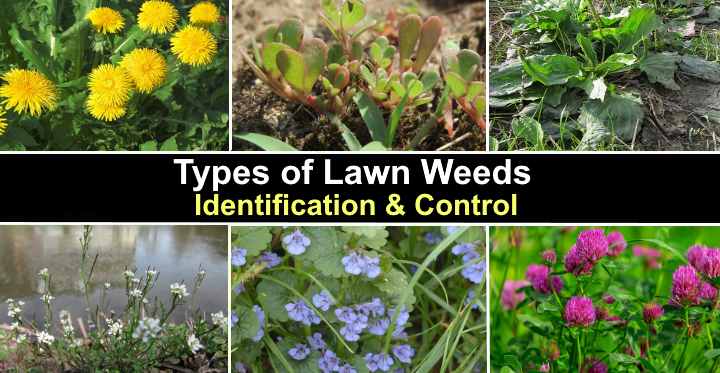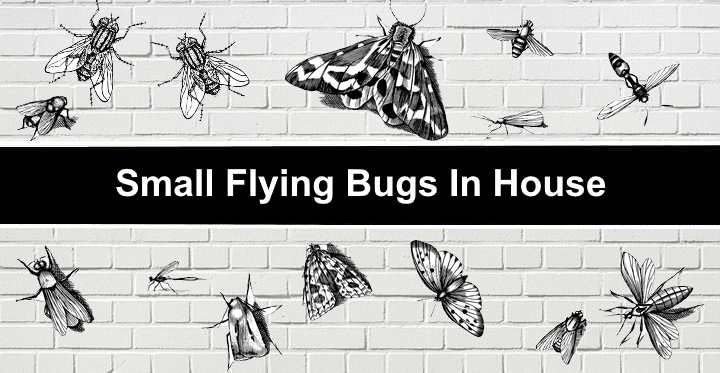The Best Florida Perennial Flowers – Identification Guide (With Pictures)

Perennial flowers for Florida are a great addition to a garden landscape to add color, greenery, and texture. Flowers that come back year after year are perfect low-maintenance landscaping solutions. Flowering shrubs, ground cover plants, and beautiful vining plants with stunning flowers beautify a southern garden. In addition, planting perennials in a front yard can improve curb appeal. In contrast, perennial shrubs in a backyard boost aesthetics and act as a privacy screen.
Types of Lawn Weeds (with Their Picture and Name) – Identification and Control

Lawn weeds are pesky unwelcome plants that can destroy your lawn’s beautiful appearance. But getting a weed-free lawn can be challenging. Not all lawn weeds look alike. And some types of grassy weeds like crabgrass and nutsedge look like grass and are hard to identify. Other invasive broadleaf weeds in lawns can have purple or yellow flowers. Because stubborn weeds like creeping Charlie, dandelions, and oxalis have creeping roots, the unwanted plants can be hard to get rid of in a healthy lawn.
The Best Flowers For Trellis – Identification Guide

Flowering climbing plants that grow up a trellis can add stunning visual height to a garden landscape. The best flowers for a trellis bloom for a long time, and they grow on stems that have clinging tendrils or wrap around the trellis structure. Vining plants climbing a trellis also help cover walls, fences, and unsightly garden structures or help define borders on an outdoor space.
Florida Privacy Plants (With Pictures) – Identification Guide

Privacy plants are an excellent choice for planting in a Florida garden. Shrubs and climbing plants with dense foliage provide a natural barrier for screening, increasing security and protecting your front or backyard. Whether you’re looking for evergreen shrubs or flowering vines, there are plenty of options available that will thrive in the Sunshine State. By providing a tall, natural screen around your yard, you can also keep out prying eyes.
Fence Landscaping Ideas: What to Plant Along Fence Line

Planting shrubs and creeping plants along a fence line is ideal for covering a bare or unsightly fencing system. Fence landscaping ideas can include planting evergreen shrubs to hide the fence throughout the year. Or you can plant flowering shrubs to add color, fragrance, and greenery from spring through fall. Additionally, you can landscape along a fence using climbing plants to grow behind the foliage of other shrubs.
Types of Small Flying Bugs In House (With Pictures) – Identification Guide
38 Types of Acorns (With Pictures) – Identification Guide For Oaks By Acorns
Types of Wasps and How to Identify Them (Pictures and Names)

Wasps are small, flying insects that usually have an identifiable black body with yellow bands. Typically, wasps have a slender, smooth body with a narrow waist, a pair of membranous wings, and six spindly legs. Many species of wasps look like bees, and both wasps and bees are important pollinators that can cause a painful sting.
Palm Trees: The Complete Guide (With Pictures)

Palm trees evoke thoughts of tropical sandy beaches, warm sunshine, or beautiful colorful sunsets with silhouettes of tall, slender palms with crowns or arching feather-like fronds. However, many types of cold-hardy palm trees grow in cold climates and can even withstand freezing temperatures. Also, many dwarf palm trees have shrubby growth and only grow a few feet above the ground. Additionally, a wide variety of palm trees produce fruit in the form of coconuts, dates, drupes, and berries.
Types of California Palm Trees With Identification (Pictures & Names)

Palm trees are a common sight in the California skyline. Tall, majestic palms with crowns of arching fronds look spectacular against beautiful sunsets along the coast of the Golden State. From the native California palm tree to king palms, slender Mexican fan palms, kentia palms, and date palms, it seems that palm trees are prevalent throughout the state of California.


